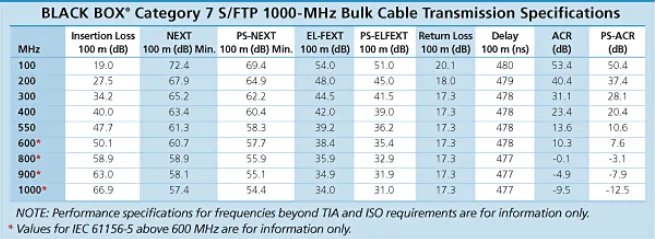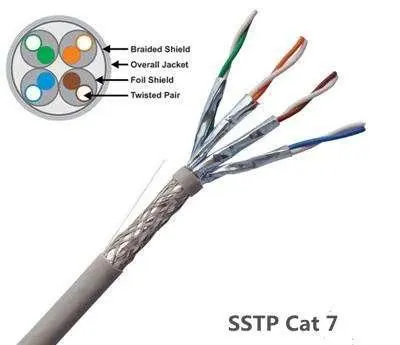The following are the different types of Cat7 Ethernet cables:
1. Cat7a cable
Cat7a is an abbreviation for "Category 7 Enhanced". Amendment 2 (2010) to ISO 11801 2nd edition defines frequencies up to 1000MHz. Cat7a Ethernet cables are usually slightly thicker because the additional shielding is designed to increase the speed to 1000MHz.
2. RJ45 Cat7 cable
Most Cat7 Ethernet cables have RJ45 connectors terminated at both ends, making them plug and play. This is the plug required for cable sockets on any standard home router or LAN cable switch, and is the standard in almost all Ethernet connection settings.
3. Cat7 (a) UTP cable
Cat7 (a) UTP cable refers to an unshielded twisted pair design. The four twisted pair copper wires that make up the Cat7 Ethernet cable are only wrapped by their own internal sheath and the sheath of the external cables in this configuration.
4. Cat7 (a) F/UTP cable
Similar to the UTP design discussed above, F/UTP cables (foil/unshielded twisted pair) do not have additional shielding around the twisted pair itself. However, a single foil shield beneath the outer sheath of the cable will twist four pairs together.
5. Cat7 (a) STP and FTP Cat7 cables
These abbreviations represent shielded twisted pair and foil twisted pair, respectively. STP and FTP indicate that the cable has additional wrapping around each pair of twisted pair shielded with protective foil.
6. SFTP Cat7 cable and SSTP Cat7 cable
SFTP (Shielded Folded Twisted Pair) or SSTP (Shielded Spliced Pair). Cat7 (a) SFTP or SSTP indicates that the twisted pair has foil shielding/shielding between the outer cable sheath and the inner wire, and is individually wound around each twisted pair.
To find products and services more accurately, please try entering keywords for search.
For more product and service content, please contact us and send an email to sales@dimud.com.
We sincerely look forward to connecting with you!



